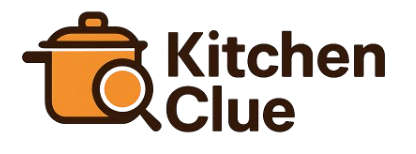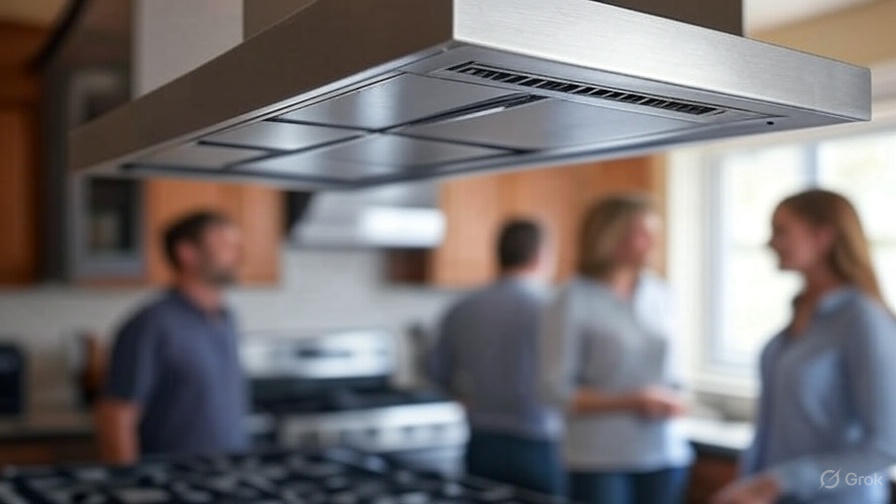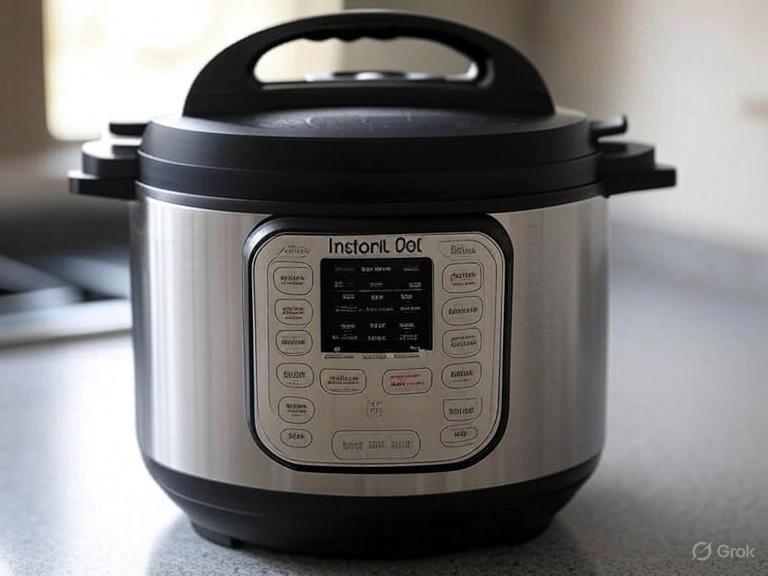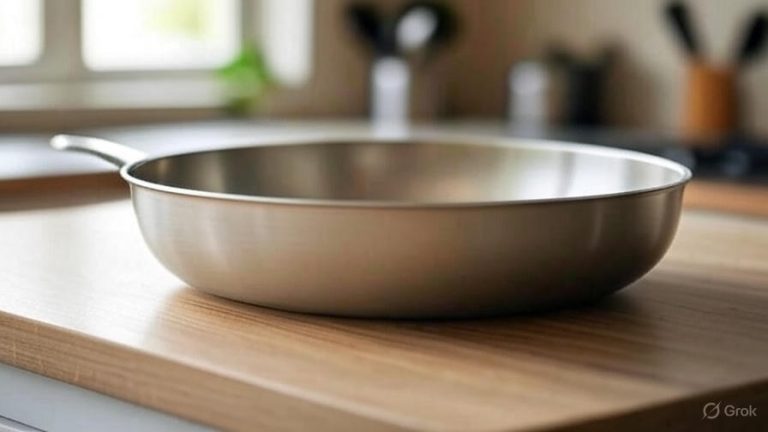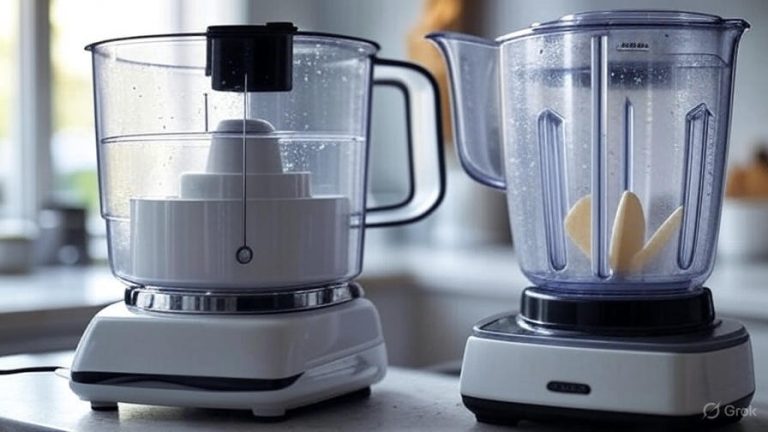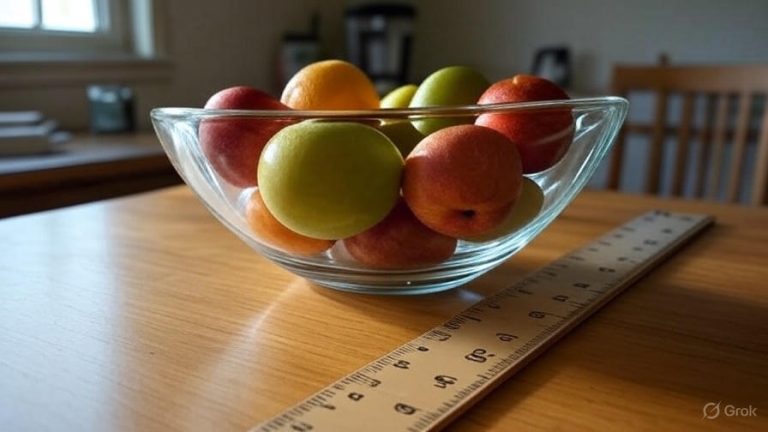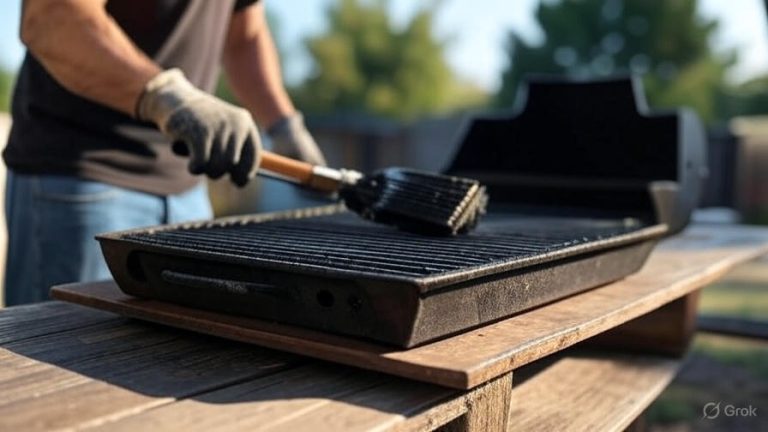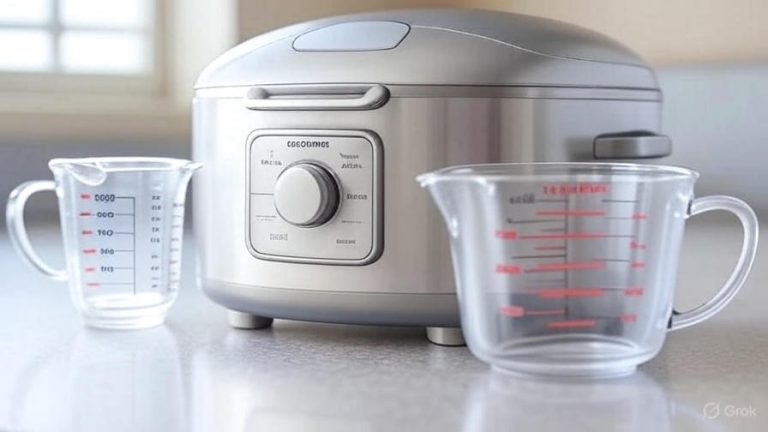How to Choose a Range Hood?
Your kitchen deserves proper ventilation, and the right range hood makes all the difference. Steam, smoke, grease, and cooking odors need somewhere to go, and without adequate ventilation, these elements can damage your cabinets, walls, and even your health. A quality range hood removes these pollutants while adding style and functionality to your cooking space.
Range hoods serve as the unsung heroes of kitchen design. They work silently in the background, protecting your investment in cabinetry and appliances while keeping your air clean and fresh. The market offers dozens of styles, sizes, and performance levels, making the selection process both exciting and overwhelming.
This guide walks you through every aspect of range hood selection, from basic ventilation principles to advanced features that can transform your cooking experience. By the end, you’ll have the knowledge to make an informed decision that serves your kitchen for years to come.
Types of Range Hoods: Finding Your Perfect Match
Under-Cabinet Range Hoods
Under-cabinet models mount directly beneath your existing cabinets, saving space while providing efficient ventilation. These compact units work well in smaller kitchens where every inch counts. Installation typically requires minimal modifications to existing cabinetry, making them popular with homeowners tackling kitchen updates on a budget.
The design keeps the hood out of sight while maintaining easy access to controls and filters. Most under-cabinet models feature slide-out filters that make cleaning simple. Performance varies widely across models, so pay attention to CFM ratings and noise levels when comparing options.
Wall-Mount Range Hoods
Wall-mount hoods create a focal point in your kitchen while delivering powerful ventilation. These units attach directly to the wall above your cooktop, offering more design flexibility than under-cabinet models. The exposed design allows manufacturers to incorporate decorative elements like stainless steel, copper, or custom finishes.
Installation requires proper wall support and may involve electrical and ductwork modifications. Wall-mount hoods typically offer higher CFM ratings than under-cabinet models, making them suitable for serious home cooks who generate significant heat and smoke.
Island Range Hoods
Island installations present unique challenges since the hood hangs from the ceiling with no wall support. These statement pieces often feature glass, stainless steel, or decorative metalwork that complements your kitchen’s aesthetic. Island hoods require robust ceiling support and careful planning for ductwork routing.
The open design of island kitchens means these hoods need higher CFM ratings to capture cooking byproducts effectively. Many island hoods include lighting features that illuminate the cooking surface below, combining function with form.
Insert Range Hoods
Insert hoods, also called liner hoods, fit inside custom cabinetry or decorative surrounds. This approach gives you maximum design control while maintaining ventilation performance. The actual ventilation components remain hidden behind your chosen facade, whether that’s wood cabinetry, stone, or metal.
Professional designers often specify insert hoods for high-end kitchens where the ventilation system needs to blend seamlessly with custom millwork. Installation requires coordination between the hood manufacturer, cabinet maker, and contractor.
Downdraft Range Hoods
Downdraft systems pull air downward through vents built into the cooktop or countertop. These systems work well when overhead ventilation isn’t possible due to structural limitations or design preferences. Pop-up downdraft units rise from the countertop when activated, then retract when not in use.
Performance limitations make downdraft systems less effective than overhead hoods, particularly for tall pots or high-heat cooking. They work best with electric or induction cooktops rather than gas ranges, which produce combustion byproducts that rise naturally.
Size and CFM Requirements: Getting the Power Right
Calculating Your CFM Needs
CFM (cubic feet per minute) measures how much air your range hood moves. The general rule suggests 100 CFM for every 10,000 BTUs of cooking power, but this formula oversimplifies the calculation. Your cooking habits, kitchen layout, and local building codes all influence the ideal CFM rating.
Heavy cooking with frequent frying, grilling, or high-heat techniques requires more ventilation power. Light cooking with occasional sautéing or simmering needs less. Consider your peak cooking demands rather than average use when calculating requirements.
Width Considerations
Your range hood should extend at least three inches beyond each side of your cooktop for optimal capture efficiency. A 30-inch cooktop works best with a 36-inch hood, while a 36-inch cooktop pairs with a 42-inch hood. Island installations may require even wider hoods due to cross-currents from room air circulation.
Wider hoods capture cooking byproducts more effectively but cost more and may overwhelm smaller kitchens visually. Balance performance needs with aesthetic proportions when making your decision.
Height Installation Guidelines
Install your range hood 24-30 inches above electric cooktops and 30-36 inches above gas ranges. Gas ranges require extra clearance due to open flames and higher heat output. Island hoods can mount slightly lower since they don’t compete with wall cabinets for space.
Proper height ensures effective capture while maintaining adequate working space. Too low restricts movement and increases the risk of contact with the hood during cooking. Too high reduces capture efficiency and may require higher CFM ratings to compensate.
Ventilation Systems: Ducted vs. Ductless Options
Ducted Ventilation Benefits
Ducted systems exhaust cooking byproducts directly outside your home, providing the most effective ventilation possible. These systems remove heat, moisture, grease, and odors completely rather than recycling them back into your kitchen. Professional chefs and serious home cooks prefer ducted systems for their superior performance.
Installation requires ductwork routing from the hood to an exterior wall or roof. Shorter, straighter duct runs perform better than long runs with multiple turns. Each elbow or length of duct reduces airflow, so plan the most direct route possible.
Ductless System Considerations
Ductless or recirculating hoods filter air through charcoal and grease filters before returning it to the kitchen. These systems work when ductwork installation isn’t feasible due to structural limitations or apartment living situations. Modern ductless hoods incorporate advanced filtration technology that significantly improves air quality.
Performance limitations make ductless systems less effective at removing heat and moisture compared to ducted alternatives. The charcoal filters require regular replacement, adding ongoing maintenance costs. However, installation simplicity and lower upfront costs make ductless systems attractive for many situations.
Hybrid Systems
Some manufacturers offer convertible hoods that can operate in ducted or ductless modes. These units provide installation flexibility while maintaining the option to upgrade to ducted ventilation later. The conversion typically requires purchasing a recirculation kit and installing appropriate filters.
Motor Power and Performance Features
Motor Types and Locations
Internal motors mount inside the hood housing, keeping noise levels down while simplifying installation. External or remote motors install in attics, basements, or outside walls, connected to the hood through ductwork. Remote motors reduce kitchen noise significantly but complicate installation and maintenance.
In-line motors mount within the ductwork between the hood and exterior termination. This approach balances noise reduction with installation simplicity. The motor location affects both performance and acoustics, so consider your priorities carefully.
Variable Speed Controls
Multi-speed controls let you match ventilation power to cooking intensity. Light simmering requires minimal airflow, while high-heat searing demands maximum power. Electronic controls offer more precise speed adjustment than mechanical switches, often including automatic features that adjust speed based on heat or smoke detection.
Some high-end models include heat sensors that automatically increase fan speed when temperatures rise. This automation ensures adequate ventilation without constant manual adjustment during cooking.
Noise Level Considerations
Range hood noise levels are measured in sones, with lower numbers indicating quieter operation. Units producing 1-3 sones operate quietly enough for normal conversation, while 4-6 sones create noticeable noise that may interfere with kitchen activities.
Balance noise levels with performance requirements. Higher CFM ratings typically produce more noise, but quality construction and remote motors can minimize sound levels. Read reviews and specifications carefully to find the best compromise for your needs.
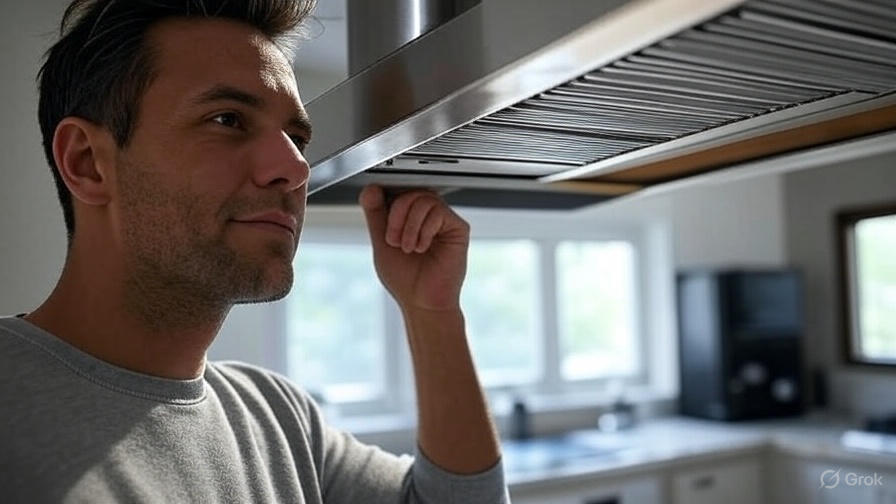
Filter Systems and Maintenance Requirements
Grease Filter Types
Aluminum mesh filters capture grease particles while allowing air to flow through. These dishwasher-safe filters require regular cleaning but last for years with proper care. Stainless steel baffle filters use a maze-like design that forces air to change direction, causing grease to condense and drain into collection areas.
Baffle filters handle high-volume cooking better than mesh filters and clean more easily. They’re less likely to clog and maintain airflow even when heavily soiled. Professional-grade hoods often specify baffle filters for their superior performance and durability.
Charcoal Filter Maintenance
Ductless systems rely on activated charcoal filters to remove odors and some particles. These filters require replacement every 3-6 months depending on cooking frequency and intensity. Replacement costs add up over time, making ducted systems more economical in the long run.
Quality varies significantly among charcoal filters. OEM filters usually perform better than generic alternatives but cost more. Some manufacturers offer washable charcoal filters that last longer but may not filter as effectively as disposable options.
Filter Access and Cleaning
Easy filter access encourages regular maintenance and keeps your hood operating efficiently. Look for hoods with slide-out or swing-down filters that don’t require tools for removal. Dishwasher-safe filters simplify cleaning, while hand-wash-only filters may discourage regular maintenance.
Some high-end hoods include filter cleaning indicators that remind you when maintenance is due. These systems track operating hours and alert you before performance degrades significantly.
Design and Style Integration
Material Options
Stainless steel remains the most popular range hood material due to its durability, easy cleaning, and professional appearance. Brushed finishes hide fingerprints better than polished surfaces, while colored stainless steel options provide design flexibility without sacrificing performance.
Copper hoods develop natural patina over time, creating unique character that many homeowners prize. Glass hoods offer contemporary styling but require frequent cleaning to maintain their appearance. Wood and other custom materials can match existing cabinetry but may require special care and maintenance.
Lighting Integration
Built-in lighting illuminates your cooking surface while eliminating shadows that overhead fixtures might create. LED lights provide bright, energy-efficient illumination that lasts longer than traditional bulbs. Some hoods include multiple lighting zones or dimming controls for ambiance adjustment.
Color temperature affects how food appears during preparation. Warmer light creates a comfortable atmosphere but may make it difficult to judge food doneness accurately. Cooler light provides better color rendering for cooking tasks but may feel harsh in residential settings.
Control Options
Push-button controls offer simple operation but may be difficult to clean around. Touch controls provide sleek aesthetics and easy cleaning but can be accidentally activated. Remote controls allow operation from anywhere in the kitchen but can be misplaced easily.
Some premium hoods include smartphone connectivity for remote monitoring and control. These smart features let you check filter status, adjust settings, or receive maintenance reminders through mobile apps.
Installation Considerations and Requirements
Electrical Requirements
Most range hoods require dedicated electrical circuits, typically 15 or 20 amps depending on motor size and lighting requirements. High-performance hoods with multiple motors or extensive lighting may need larger circuits or even 240-volt power. Check local electrical codes and hire qualified electricians for installation.
GFCI protection may be required in some jurisdictions, particularly for hoods installed near sinks or in areas with potential moisture exposure. Plan electrical requirements early in your project to avoid costly changes later.
Ductwork Planning
Effective ductwork design minimizes resistance while providing adequate airflow. Use the largest diameter ducts possible, typically 6-8 inches for residential applications. Avoid unnecessary turns and keep duct runs as short as possible for optimal performance.
Exterior terminations require proper weatherproofing and pest protection. Wall caps work well for short, straight runs, while roof caps handle longer or angled installations. Consider maintenance access when planning termination locations.
Structural Support
Wall-mount hoods require adequate wall framing to support their weight and operational forces. Island hoods need robust ceiling support, often requiring additional framing or structural modifications. Factor these requirements into your project planning and budget.
Some installations may require professional structural assessment, particularly for heavy or powerful hoods in older homes. Don’t compromise safety for appearance or convenience.
Budget Planning and Value Considerations
Price Range Analysis
Basic under-cabinet hoods start around $200-300 but may lack the power and features needed for serious cooking. Mid-range hoods ($500-1200) offer good performance and reliability for most home kitchens. Premium hoods ($1500-5000+) provide professional-grade performance and luxury features.
Commercial-style hoods designed for home use command premium prices but deliver restaurant-quality ventilation. These units justify their cost for dedicated home chefs who demand maximum performance.
Long-term Operating Costs
Energy consumption varies significantly among range hood models. Variable speed controls and efficient motors can reduce operating costs over time. LED lighting costs less to operate than halogen or incandescent alternatives while lasting much longer.
Filter replacement costs add up over the hood’s lifetime. Ductless systems require regular charcoal filter changes, while ducted systems only need occasional grease filter replacement. Factor these ongoing costs into your total ownership calculation.
Professional Installation Costs
Simple under-cabinet installations may cost $200-400 for labor, while complex island or wall-mount installations can exceed $1000. Electrical work, ductwork modifications, and structural changes add to installation costs. Get detailed quotes from qualified contractors before finalizing your budget.
DIY installation can save money but may void warranties or violate local codes. Professional installation ensures proper performance and compliance with safety requirements.
Making Your Final Decision
The perfect range hood balances performance, aesthetics, and budget considerations while meeting your specific cooking needs. Start by assessing your cooking habits and kitchen layout, then narrow your options based on installation requirements and design preferences.
Consider future needs as well as current requirements. A more powerful hood may serve you better as your cooking skills develop or entertaining increases. Quality construction and reliable warranties protect your investment over the long term.
Take time to research manufacturers and read user reviews before making your final decision. A range hood represents a long-term investment in your kitchen’s functionality and your family’s comfort. The right choice will serve you well for many years while enhancing both your cooking experience and your home’s value.
Your kitchen deserves ventilation that works as hard as you do. With careful consideration of all these factors, you’ll find the range hood that transforms your cooking space into the efficient, comfortable environment you’ve always wanted.
